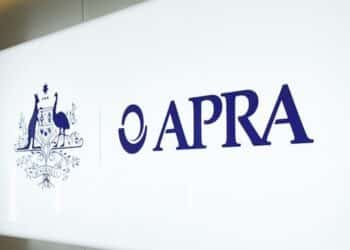Research conducted by the life insurance comparison company – based on an analysis of 3,000 policies across 10 life insurers – shows that while an adviser might write based on a 120 per cent commission model, they will not actually get the entire value of the commission.
For example, Life Insurance Direct said a 120 per cent commission paid by the insurer includes GST, which is paid to the ATO, not to the adviser.
“Life insurers generally don’t pay commissions on frequency loadings (6-9 per cent), policy fees ($5.61 – $8.82 / month) or stamp duty (0-10 per cent) but these are included in the mythical ‘120 per cent’ cited by these companies,” a statement from Life Insurance Direct said.
“Excluding these elements means the average commission received for the policy implementation is closer to 89.83 per cent.”
Life Insurance Direct chief executive Russell Cain said understanding the true amount that advisers take home will indicate what the proposed life insurance framework will mean for advisers.
This prompts questions about how much consumers should be paying for life insurance, he said.
“Reforms that ultimately reduce competition may have a significant negative impact on consumers,” Mr Cain said.
“Unfortunately, the empirical data and intuitive tools available from lifeinsurancedirect.com.au indicate that the interests of consumers may not be served at all well by the reforms.”




The issue of the 115% first years base commission (New Suncorp Life Risk Business) based on the standard premium, is paid based on the agency agreement.
GST on the Commission is paid on top of the New Business Commission, the admin system or agency system should calculate this by the Life Company to the Agent or Financial Planner.
Depending upon the type of sale, Agent or Financial Planner, a commission split may need to be done, in line with the agency agreement. I have come across agreements where the Commission split for Superannuation Master Trust type business is 100% to a Agent, 80% to a Adviser and 20% to the Broker.
Kind regards,
Adrian Totolos.
Business Analyst.
Nice that someone is disclosing the whole picture but now include things such as the decline I just got from an insurer even after I have produced the SOA at my own cost etc. I charge a small fee always but still a large loss making exercise when cover doesnt do into place 100% of the time.
This myth is exacerbated by the compliance departments of some dealer groups who insist on disclosure of the headline % rate in an SoA, even though that headline % rate is usually greater than the actual amount paid by the insurer.
“Life insurers generally don’t pay commissions on frequency loadings (6-9 per cent), policy fees ($5.61 $8.82 / month) or stamp duty (0-10 per cent) but these are included in the mythical ‘120 per cent’ cited by these companies,” a statement from Life Insurance Direct said.
I believe this to be a correct.
Kind regards,
Adrian Totolos.
Business Analyst.
Good input Russell, only thing you missed is the 10 – 20% dealer split. that pretty much wipes out small business at 60% upfront. Then again, as said, thats the whole reason for this corruption of our industry.
I think there are a couple issues raised here as the 120% is real its the premium that is “mythical”. Premiums can, and should, reduce dramatically. There is no longer an argument to support a frequency loading, technology has made that redundant. Policy fees are also extremely questionable. I could see an insurer introducing a one -off administration set up fee to replace them BUT only then if they stripped out the amount they would already have in the base premium. The right questions have to be asked by the regulator to get the right answers but they are most likely being “coached” by the corporates before they start asking questions.
Secondly, 120% is excessive. But is it when the total premium is less that $1000 and it costs (optimistically) $1000 to produce the SOA? But that gets clouded when an adviser regularly “churns” policies – for both good or bad reasons. If the 120% goes the at the smaller end of town the old CAR style document could have value by reducing advice process time. BUT if it is a true advice model then the work is the same for a $800 policy as a $4,000 policy. Beyond the lower end I see no argument at reducing the large up-front AS LONG AS the product manufacturers don’t profit from the changes as it currently looks like they will.
As I’ve said it comes to asking the right questions to get the right answers to make the right changes. But however it falls not everyone will agree – the murky history of the life industry will ensure that. Let’s get the focus off the adviser and onto the manufacturer.
“consumers may not be served at all well by the reforms”… Well of course they won’t. These reforms are not designed to benefit consumers. They are designed by the life insurance companies to boost their profits and hurt small independent advisers. With less competition from advisers, they will go direct, where they can sell rubbish policies at inflated prices. The only reason they received Government support for these proposals, is because a number of self-interested parties are also aligned in their desire for IFA’s to be wiped out so they can get more attention from unadvised consumers – ie. Choice, Fairfax and the Labor/Union Industry Super Funds.
well done Russell on crunching the remuneration numbers. life insurance execs take note. 60 -30.17 equals 29.83 for the risk adviser . better still 20 -30.17 = oops. 2018 what a great year to look forward too.